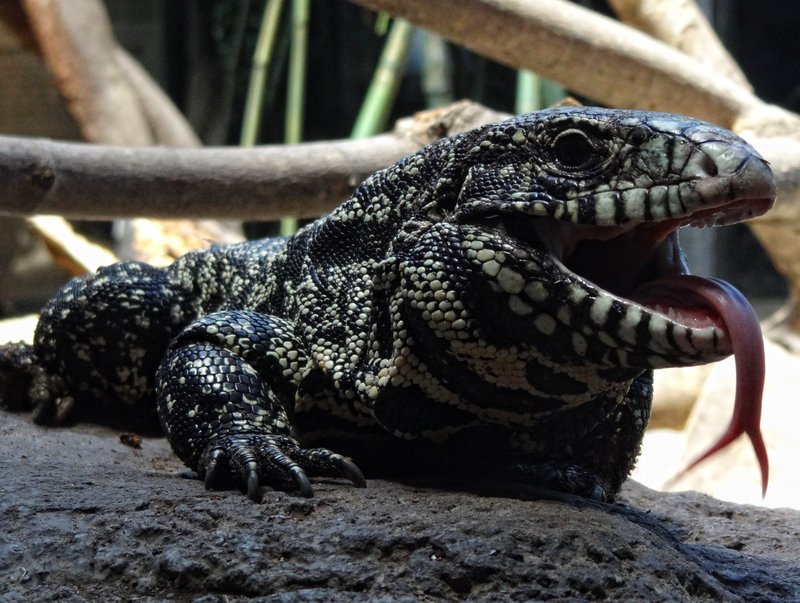|
| Query: lizard | Result: 1117th of 1599 | |
Argentine black and white tegu (Salvator merianae)
| Subject: | Argentine black and white tegu (Salvator merianae)
| | Poster: | Wiki Photos (---@---.---)
| |

| Resolution: 3706x2792
File Size: 1735219 Bytes
Date: 2013:11:05 18:06:57
Camera: DSC-HX100V (SONY)
F number: f/4.5
Exposure: 1/125 sec
Focal Length: 1916/100
Upload Date: 2017:01:30 21:15:46
|
Description
English: An Argentine Black and White Tegu smelling the air with its tongue, photographed in the Buenos Aires Zoo in November 2013.
Date 5 November 2013, 18:06:57
Source Own work by uploader, http://bjornfree.com/galleries.html
Author Bjørn Christian Tørrissen https://commons.wikimedia.org/wiki/User:Uspn
Source: https://commons.wikimedia.org/wiki/File:Tupinambis-merianae-BA-Zoo.JPG
The Argentine black and white tegu (Salvator merianae), also called the Argentine giant tegu, is the largest species of tegu lizard. They are an omnivorous species which inhabits the tropical rain forests, savannas, and semi-deserts of east and central South America. Like many other reptiles, Argentine tegus go into brumation (a form of hibernation) in autumn when the temperature drops. They exhibit a high level of activity during their wakeful period of the year. Order: Squamata, Suborder: Lacertilia, Infraorder: Scincomorpha, Family: Teiidae
Synonyms:
Salvator merianae A.M.C. Duméril & Bibron, 1839
Teius teguixim — Gray, 1845
Tupinambis teguixin — Boulenger, 1885
Tupinambis merianae — Dirksen & De la Riva, 1999
Salvator merianae — Harvey et al., 2012 |
^o^
Animal Pictures Archive for smart phones
^o^
|
|

